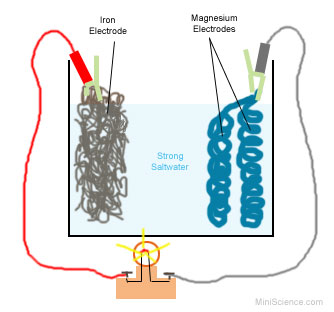
Breaking News
 Mamdani's NYC Tenant Czar Called To 'Seize Private Property,' Calls Home Ownership
Mamdani's NYC Tenant Czar Called To 'Seize Private Property,' Calls Home Ownership
 Trump basks in the glory of his Venezuela raid - but now his allies are reviving a question they...
Trump basks in the glory of his Venezuela raid - but now his allies are reviving a question they...
 Cummings: Deep State Will 'Smash The Absolute Living Sh*t Out of Farage'...
Cummings: Deep State Will 'Smash The Absolute Living Sh*t Out of Farage'...
 Musk & Trump Grab Dinner After Maduro Arrest
Musk & Trump Grab Dinner After Maduro Arrest
Top Tech News
 The First Production All-Solid-State Battery Is Here, And It Promises 5-Minute Charging
The First Production All-Solid-State Battery Is Here, And It Promises 5-Minute Charging
 See inside the tech-topia cities billionaires are betting big on developing...
See inside the tech-topia cities billionaires are betting big on developing...
 Storage doesn't get much cheaper than this
Storage doesn't get much cheaper than this
 Laser weapons go mobile on US Army small vehicles
Laser weapons go mobile on US Army small vehicles
 EngineAI T800: Born to Disrupt! #EngineAI #robotics #newtechnology #newproduct
EngineAI T800: Born to Disrupt! #EngineAI #robotics #newtechnology #newproduct
 This Silicon Anode Breakthrough Could Mark A Turning Point For EV Batteries [Update]
This Silicon Anode Breakthrough Could Mark A Turning Point For EV Batteries [Update]
 Travel gadget promises to dry and iron your clothes – totally hands-free
Travel gadget promises to dry and iron your clothes – totally hands-free
 Perfect Aircrete, Kitchen Ingredients.
Perfect Aircrete, Kitchen Ingredients.
 Futuristic pixel-raising display lets you feel what's onscreen
Futuristic pixel-raising display lets you feel what's onscreen
 Cutting-Edge Facility Generates Pure Water and Hydrogen Fuel from Seawater for Mere Pennies
Cutting-Edge Facility Generates Pure Water and Hydrogen Fuel from Seawater for Mere Pennies
The 'holy grail' of batteries:

An 'iron-air' battery has been developed in the US that can store electricity from wind or solar power stations for days at a time, slowly discharging it to the grid.
It will help tackle climate change by reducing the need for fossil fuel power plants, according to technology startup Form Energy, from Massachusetts, US.
The Iron-Air battery is a 'new class of cost-effective, multi-day energy storage system,' that can feed electricity for 100 hours at 1/10th the cost of lithium-Ion, the 'holy grail' in terms of renewable energy technology.
It is made using iron, one of the most common elements on Earth, and works by breathing in oxygen, converting iron to rust, and turning rust back to iron.
As it takes in the oxygen and converts the iron back and forth it is charging and discharging the battery, a process that keeps the energy stored for a longer period.
The batteries are too heavy for use in electric cars, according to the firm, who say they are designed to meet the challenge of keeping a constant power supply.
If development continues at pace, Form Energy hope the first batteries will be working to supply the grid by 2025.
This will solve one of the most elusive problems facing renewable energy, that is how to cheaply store large amounts of electricity and supply it to power grids when the sun isn't shining for solar panels or wind isn't blowing for turbines.
Solar and wind resources are the lowest marginal cost sources of electricity in most of the world, but they don't provide a constant supply like fossil fuel power plants.



